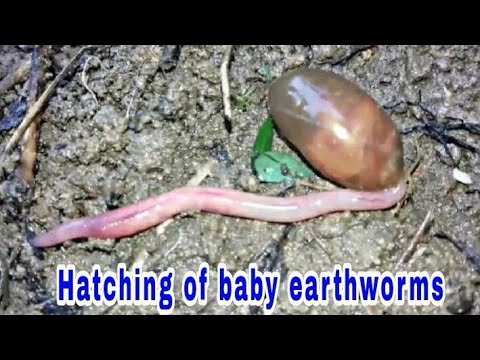
Earthworm reproduction is like a little miracle happening beneath our feet. They may not have the same flashy courtship rituals as some animals, but they’ve got a unique system that ensures their survival and proliferation. And guess what? It all starts with a cozy cocoon. In this article, we’ll walk you through the entire process, breaking it down into simple, bite-sized pieces. You’ll see just how remarkable these creatures truly are!
The Basics of Earthworm Anatomy
To understand how earthworms reproduce, it’s essential to know a bit about their anatomy. Unlike many animals, earthworms are hermaphrodites, meaning each individual possesses both male and female reproductive organs. Picture it like having the best of both worlds—making it easier for them to find a partner in the soil!
During mating, two earthworms line up next to each other. They exchange sperm, which is stored in special sacs. After the rendezvous, they each produce a cocoon containing eggs and the stored sperm. This unique setup ensures that even if an earthworm doesn’t find a mate, they can still reproduce successfully. Mother Nature really knows what she’s doing!
How Earthworms Mate
Mating might seem straightforward, but there’s a lot more going on during an earthworm’s romantic rendezvous. First, the two earthworms will engage in a ritual that can last several hours. They exchange sperm through a process where they intertwine their bodies. Think of it like a slow dance—no fancy moves, but it gets the job done!
After mating, the worms will part ways, and each will begin to create a cocoon. The cocoon is not just a simple pouch; it’s a carefully crafted structure that will protect the developing embryos. Each cocoon can contain several eggs. Once laid, the cocoon is left in the soil, hidden from potential predators and harsh conditions. Isn’t it amazing how these little creatures can produce so much life from mere soil?
The Cocoon: Nature’s Protective Capsule
Once the earthworm has laid the cocoon, it acts like a protective capsule for the developing embryos. The cocoon is made of mucous, and it solidifies over time, creating a safe environment for the eggs. You might think of it as the ultimate “baby blanket” for earthworms!
Inside the cocoon, the eggs are nourished until they’re ready to hatch. Depending on the species and environmental conditions, the incubation period can vary. The temperature, humidity, and soil quality all play a role. This adaptability is crucial for the survival of the species. The longer the young worms can stay protected, the better chance they have at survival once they emerge.
Developing Embryos: The Journey Inside the Cocoon
While the cocoon is doing its job of protecting the embryos, let’s take a closer look at what’s happening inside. The embryo develops from the fertilized egg, gradually growing into a tiny earthworm. This development phase can take anywhere from a few weeks to several months.
The embryos feed off the yolk stored in the egg, much like how a chick feeds on the yolk in its egg. As they grow, they start resembling miniature versions of adult earthworms. It’s quite a miraculous transformation, showcasing nature’s efficiency and beauty.
The Hatching Process
When the young earthworms are ready to make their grand entrance, they break free from the cocoon. This hatching process can be quite thrilling to witness! The baby worms are incredibly small and vulnerable, but they quickly burrow into the soil to find protection.
As they emerge, you might notice that they’re not fully mature yet. They still need to grow and develop, which involves several stages. With the right conditions, they will eventually grow into adult earthworms that can reproduce themselves! This cycle continues, ensuring that earthworms remain a vital part of our ecosystem.
The Importance of Earthworm Reproduction
Now that we’ve covered how earthworms reproduce, it’s essential to recognize why this process matters. Earthworms play a crucial role in soil health by aerating it and breaking down organic matter. Their reproduction ensures healthy soil, supporting plant life and contributing to food production.
With declining earthworm populations in some areas due to urbanization and pollution, understanding their reproduction can help us appreciate and protect these amazing creatures. Knowing how they reproduce not only informs us about their biology but also highlights their importance in the ecosystem.
So there you have it! Earthworm reproduction is a remarkable journey from cocoon to hatchling. These little creatures may not get all the attention they deserve, but their role in nurturing the earth is invaluable. From being hermaphrodites that can reproduce efficiently to creating protective cocoons for their young, earthworms truly showcase the intricacies of nature.
Next time you see an earthworm wriggling in the soil, remember the incredible journey it has taken to contribute to our world. Understanding how they reproduce can deepen your appreciation for these unsung heroes of the ecosystem. After all, every little creature plays a part in the grand tapestry of life!
